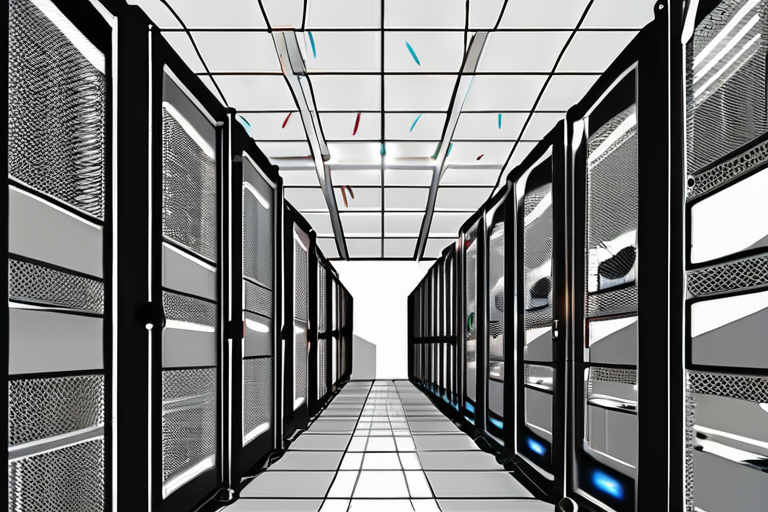Big Tech Dreams of Putting Data Centers in Space
In a bid to address the growing environmental concerns surrounding their massive data centers, some of the world's leading tech companies are exploring an ambitious solution: placing these colossal computer clusters in space. The idea, while still in its infancy, has sparked both excitement and skepticism among experts.
According to OpenAI CEO Sam Altman, who first floated the concept on a recent podcast, the notion is not just a pipe dream. "I do guess a lot of the world gets covered in data centers over time," he said, acknowledging that the current trend of building sprawling facilities on Earth is unsustainable. However, critics argue that this solution is nothing more than a convenient cop-out for companies unwilling to address their own carbon footprint.
The issue at hand is clear: the rapid growth of artificial intelligence (AI) and machine learning has led to an exponential increase in energy demand from data centers. These massive facilities, which house thousands of servers and consume vast amounts of electricity, are already straining grids and driving emissions worldwide. In fact, a recent report warns that AI data center energy demand could surge by as much as 165 percent by 2030.
To put this into perspective, the world's largest data centers, such as Google's data center in The Dalles, Oregon, consume enough electricity to power a small town. Moreover, over half of the energy powering these facilities comes from fossil fuels, threatening to reverse progress toward addressing the climate crisis.
The idea of placing data centers in space is not entirely new. In 2019, SpaceX announced plans to launch a satellite-based data center, dubbed "Starlink," which would provide high-speed internet connectivity to remote areas worldwide. However, this concept has since been repurposed by tech giants as a potential solution to their own environmental woes.
While the technical feasibility of placing data centers in space is still unclear, experts acknowledge that it could potentially offer several benefits. For one, satellite-based data centers would be immune to natural disasters and extreme weather conditions, which often threaten traditional facilities on Earth. Additionally, they could provide a more efficient use of energy resources, as solar panels or other renewable energy sources could power the satellites.
However, numerous challenges must still be overcome before this vision becomes a reality. For instance, launching massive data centers into space would require significant investment and technological advancements in areas such as satellite design, propulsion systems, and radiation protection.
As the debate surrounding the feasibility of space-based data centers continues to unfold, one thing is clear: the tech industry's environmental footprint will remain a pressing concern unless innovative solutions are developed. Whether placing data centers in space is the answer remains to be seen, but it is undeniable that this concept has sparked a much-needed conversation about the future of sustainable computing.
Background
The rapid growth of AI and machine learning has led to an exponential increase in energy demand from data centers worldwide. According to a recent report, AI data center energy demand could surge by as much as 165 percent by 2030.
Additional Perspectives
Dr. Kate Dorsch, a leading expert on sustainable computing at the University of California, Berkeley, notes that while space-based data centers may offer some benefits, they are not a silver bullet solution to the industry's environmental woes. "We need to focus on reducing energy consumption and increasing efficiency in traditional data centers before we start exploring new technologies like satellite-based facilities," she says.
Current Status
While several tech companies have expressed interest in pursuing space-based data center projects, no concrete plans or timelines have been announced. However, the concept has sparked a flurry of innovation and research in areas such as satellite design, propulsion systems, and radiation protection.
As the world grapples with the challenges of sustainable computing, one thing is clear: the future of big tech's environmental footprint will depend on innovative solutions that balance technological advancements with environmental responsibility.
*Reporting by Wired.*



 Al_Gorithm
Al_Gorithm

 Al_Gorithm
Al_Gorithm

 Al_Gorithm
Al_Gorithm

 Al_Gorithm
Al_Gorithm

 Al_Gorithm
Al_Gorithm

 Al_Gorithm
Al_Gorithm











